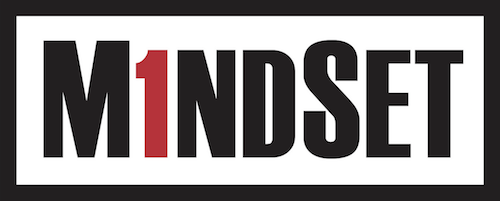Many companies that previously relied on detailed questionnaires to measure customer satisfaction learned from a guy named Fred Reichheld (who made his brilliant observation in 2003) that they really need only ask a single question to measure what they want to measure: “How likely is it that you would recommend us to a friend or a colleague?” In statistical terms, we would say that this single question (called Net Promoter Score by Reichheld) accounts for a high percentage of all the variance in the responses received.
Attempting to measure the health of an organization’s culture is a much more complex endeavor than attempting to measure customer satisfaction – a challenge that has led MindSet to create a powerful survey instrument examining roughly 49 (okay, exactly 49 – I counted them) indicators of cultural health, the MindSet Survey will not only measure cultural health, but also provide data that can be used to better target intervention efforts.
Yet there is great deal of power in getting to the essence of a construct, i.e., getting to the nub of things. If all we wanted to accomplish is to gather a total cultural health score for a client’s workplace, and we could use just two data points to make our call, we would choose to ask these two questions:
- Tell us about your boss, and
- How do you feel about going to work tomorrow?
When we find a work setting where the vast majority of employees believe their supervisor to be terrific (e.g., “Fantastic to work for”) and they genuinely look forward to going into work (e.g., “I enjoy being there”), we can be confident that the culture is strong. Such a culture will score well on the majority of MindSet’s 49 indicators; again in psychometric terms, these two questions account for a high percentage of the total variance in workplace culture.
The key: The top tier companies with respect to cultural health buck the trend when it comes to employee reaction to the terms “work” and “boss.”
A quick gauge of how well employees enjoy their work can be had by asking staff members what they view as the opposite of their work. Our goal is that they do not view the opposite of work to be fun, but rather rest or even idleness!
American culture has long promoted a negative stereotype of “the boss.” Think of cartoons and movies for a minute – how many times do you see a CEO depicted as a thoughtful, caring, and honorable person? And if your immediate response is one of, “Of course not, because they rarely are,” then you are a walking example of the power of media to shape your MindSets. You might want to explore the idea of doing more thinking for yourself.
A contributing factor to this generally negative depiction is the following dynamic: great bosses don’t walk around spouting off about their lousy staff members. Quite the opposite, the best leaders spend time and effort raving about their terrific staff members. On the other side of the equation, lousy staff members often externalize blame and are quick to loudly proclaim their boss the prime culprit in their downfall. The result as to what gets thrust into the public discourse: lots of talk about how great employees are (from good bosses) and many snide comments about how villainous bosses are (from bad employees).
Are there jerks who get promoted to supervision? Sure…but a few exceptions don’t prove the rule. Are there jerks who supervisors have to deal with as employees? Oh yeah. Only when both sides get it right, do we see cultural health that sets the foundation for a dominant business – and that is why attending to the “culture stuff” is well worth our time and very best efforts.

Founder of MindSet, LLC.

